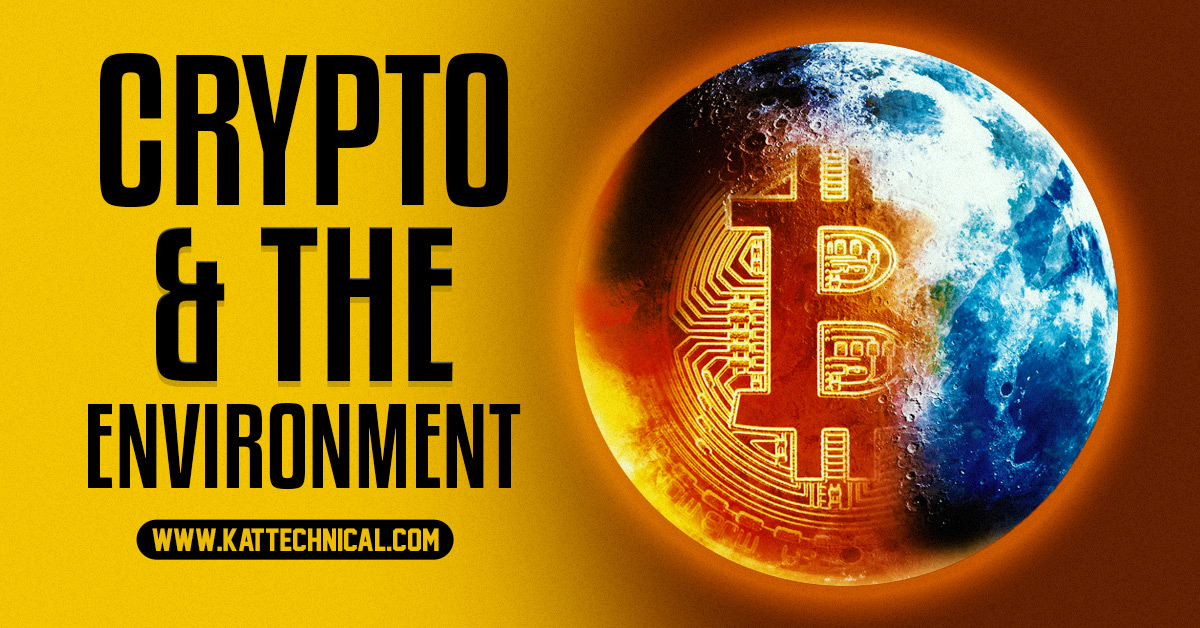The rise of digital currency, or cryptocurrency, has been one of the most significant technological developments of the last decade. However, as the popularity of cryptocurrencies continues to grow, concerns about their environmental impact have come to the forefront. This article will examine the sustainability of digital currency, and its effects on the environment, and explore possible solutions to make it more sustainable.
The Impact of Crypto on the Environment
The environmental impact of digital currency has become a topic of much debate in recent years. The mining of cryptocurrencies such as Bitcoin and Ethereum requires an enormous amount of energy, which is derived mainly from fossil fuels. As a result, the mining process contributes significantly to greenhouse gas emissions and climate change.
Energy Consumption and Carbon Footprint
Bitcoin mining alone consumes more electricity than entire countries, such as Argentina or the Netherlands. This consumption has resulted in a massive carbon footprint, with estimates suggesting that Bitcoin alone could push global temperatures up by 2 degrees Celsius by 2033.
Electronic Waste
Cryptocurrency mining also generates electronic waste, which can be harmful to the environment. The mining process requires specialized hardware, which is often discarded after it becomes obsolete, leading to e-waste that ends up in landfills.
Current Efforts to Address the Issue
Thankfully, there are steps being taken to address the environmental concerns surrounding digital currency.
Renewable Energy
One solution being proposed is the use of renewable energy sources to power cryptocurrency mining operations. Companies like Greenidge Generation and Square are leading the way in using renewable energy to power their mining operations.
Proof-of-Stake
Another solution is the development of Proof-of-Stake (PoS) blockchains. Unlike the current Proof-of-Work (PoW) system used by Bitcoin and Ethereum, PoS blockchains require much less energy to operate, making them a more sustainable alternative.
Carbon Offsetting
Carbon offsetting is also being explored as a possible solution. Some companies are investing in carbon offset projects to help offset the carbon emissions produced by cryptocurrency mining.
The Future of Sustainable Digital Currency
While current efforts to make digital currency more sustainable are encouraging, much more needs to be done to ensure its long-term viability.
Collaboration
Collaboration between governments, the private sector, and environmental organizations will be crucial in finding sustainable solutions to the environmental impact of digital currency. Governments can provide incentives to encourage the use of renewable energy, while the private sector can develop more efficient mining technologies.
Education
Education will also play a vital role in ensuring the sustainability of digital currency. As consumers become more aware of the environmental impact of their digital transactions, they can demand more sustainable options, encouraging the development of more environmentally friendly technologies.
FAQs:
Q: Is digital currency really that bad for the environment?
A: Yes, the mining process of cryptocurrencies requires an enormous amount of energy, which is derived mainly from fossil fuels, making it a significant contributor to greenhouse gas emissions.
Q: Can renewable energy be used to power cryptocurrency mining operations?
A: Yes, renewable energy sources like wind, solar, and hydropower can be used to power cryptocurrency mining operations.
Q: What is Proof-of-Stake?
A: Proof-of-Stake (PoS) is a consensus algorithm used in blockchain networks that require much less energy to operate than the current Proof-of-Work.
Challenges to Sustainability
While there are efforts being made to address the environmental impact of digital currency, there are also significant challenges that must be overcome.
Energy Intensive
Digital currency mining is inherently energy-intensive, which means that even with renewable energy sources, it will still have a considerable environmental impact.
Lack of Regulation
Another challenge is the lack of regulation around cryptocurrency mining. Without clear regulations, it can be challenging to ensure that mining operations are using sustainable practices.
Adoption Rates
Finally, the adoption rates of digital currency will also impact its sustainability. If the digital currency becomes too popular too quickly, it could lead to an exponential increase in energy consumption and carbon emissions.
Potential Solutions
Despite the challenges facing sustainable digital currency, there are potential solutions that could be explored to mitigate its environmental impact.
Green Mining Standards
One potential solution is the development of green mining standards that would ensure that mining operations are using sustainable practices.
Efficiency Improvements
Improving the efficiency of mining hardware and software could also help reduce the environmental impact of digital currency mining.
Education and Awareness
Finally, education and awareness campaigns could be launched to raise public awareness about the environmental impact of digital currency and encourage more sustainable practices.
Conclusion:
In conclusion, the digital currency has the potential to revolutionize the financial industry, but its sustainability is a growing concern. While there are efforts being made to address the environmental impact of digital currency, there are still significant challenges that must be overcome. To ensure the long-term viability of digital currency, a collaboration between governments, the private sector, and environmental organizations will be crucial. Additionally, the development of sustainable mining practices, the use of renewable energy sources, and increased education and awareness campaigns will all be essential in making the digital currency more sustainable.
